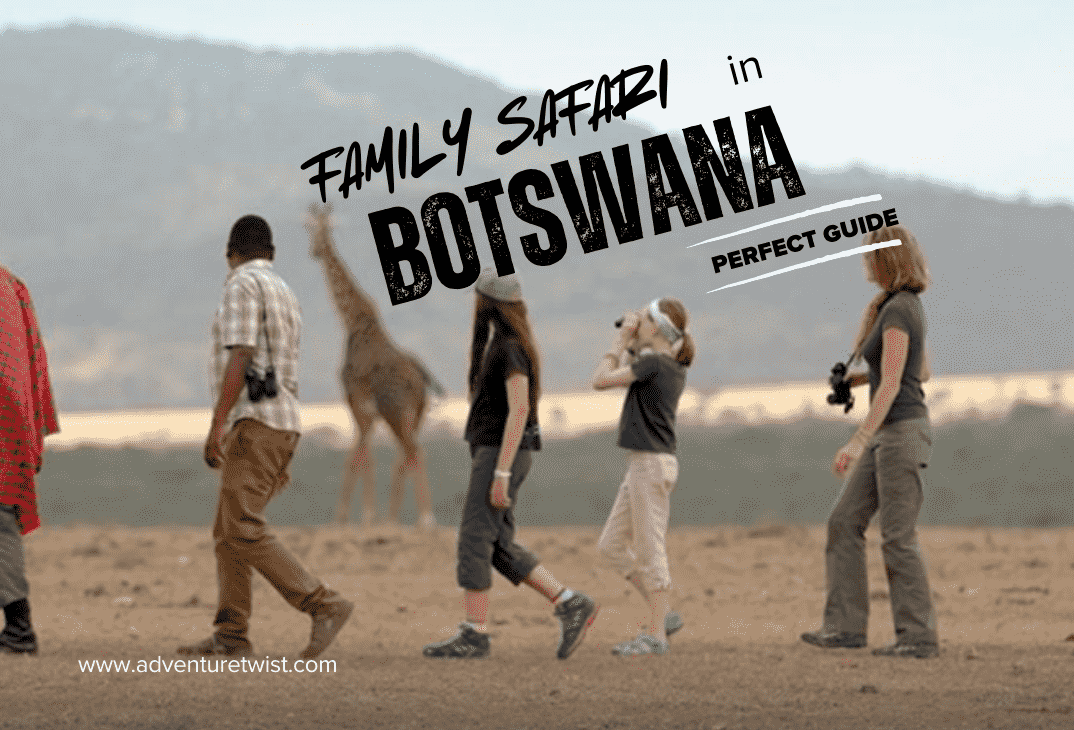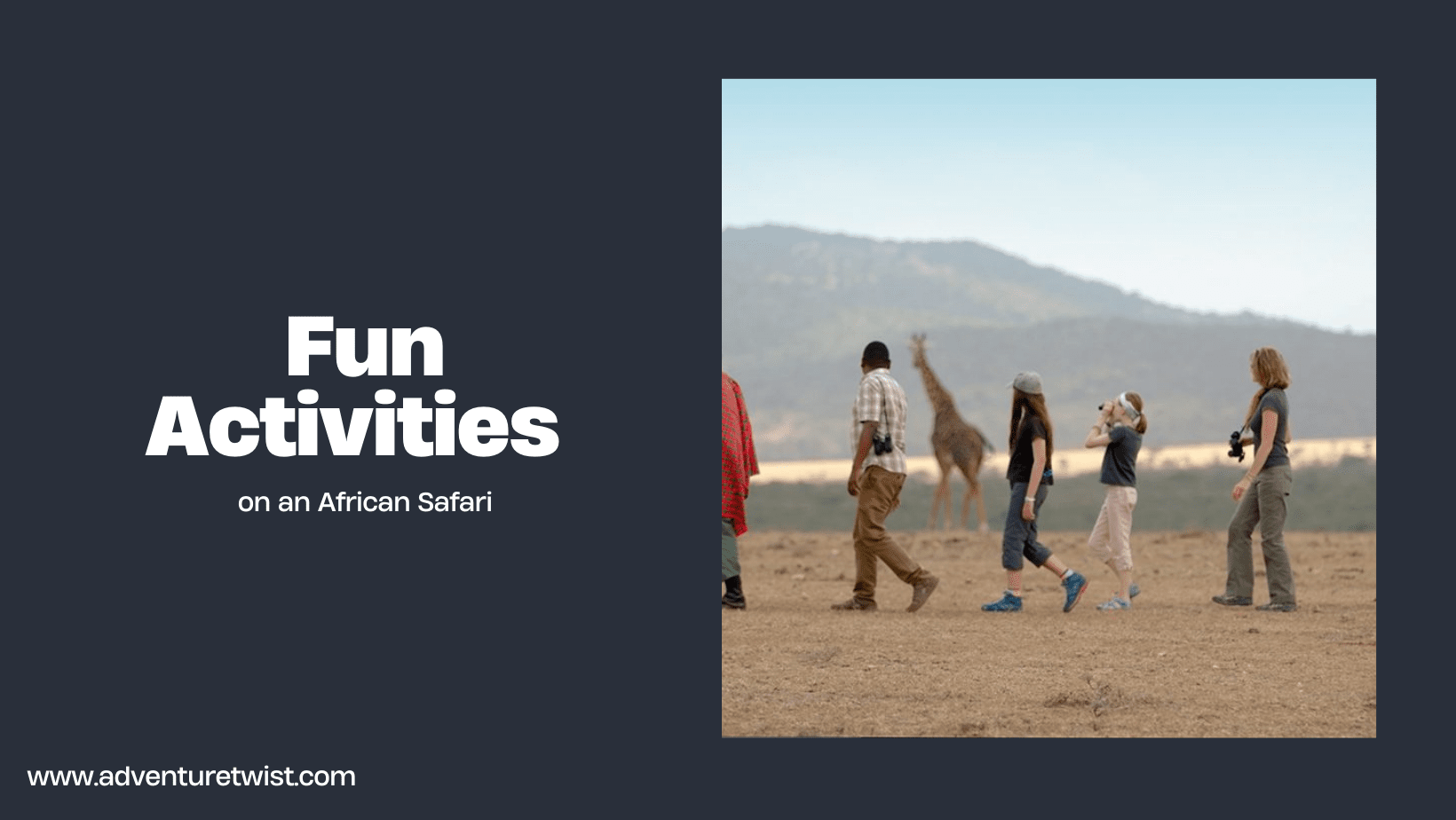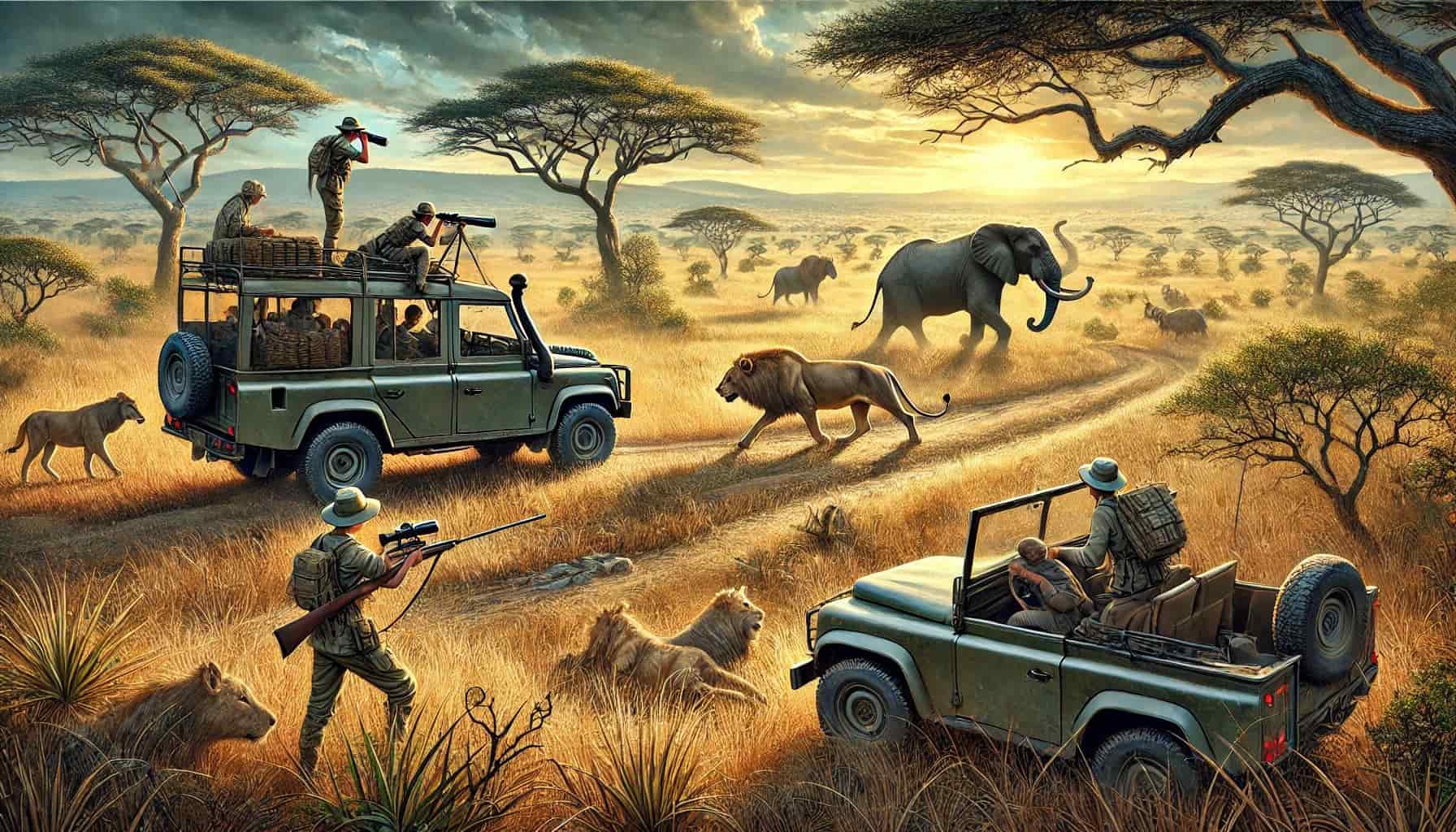
While growing up, I used to think that Safari was just one location that had a range of wide animals, not knowing that wasn’t true. There are different Safari across Africa and Tanzania has one of the most visited. But did you know that there are also several Safari Parks in Tanzania? well, I bet that’s why you are here in the first place and don’t worry we have put together the Best Safari Parks in Tanzania.
These Tanzania games ‘reservoirs’ contribute immensely to the sustenance of global wildlife management. So, if you are seeking an apt discovery of the best Tanzania safari parks, you are in the right place. We know how important it is to catch more than a glimpse of a lion and see if touching flamingos is possible. Happy reading!
Serengeti National Park
Starting with the best parks that you’ll find in Tanzania, is the Serengeti National Park. Its vast land spans from North Central Tanzania to the border of Kenya and is bordered by the Ngorongoro Conservation Area to the northwest.
The word ‘Serengeti’ itself originates from the Masai word ‘siringet’ which means a place where the land goes on forever. Little wonder its plain is extensive with sparse grasslands, woodlands, and a series of Acacia trees. The National Park is Africa‘s oldest and most highly protected area in the world. It was named a UNESCO World Heritage Site in 1979 and has been a top destination for safari enthusiasts.
Best things to explore in Serengeti National Park
The Serengeti National Park for an African safari is exclusive with an abundance of wildlife experience. According to true.travel, the national park has the largest concentration of predators in Africa. It is home to over 4000 lions, 2 million ungulates, elephants, 550 cheetahs, and 500 bird species. The Big Five – Lion, elephant, buffalo, rhinoceros, and leopard is largely a special feature of this famous landmark.
A Serengeti safari is also iconic with the spectacle of Great Migration – a movement of herds of wildebeest, gazelles, and zebras who travel from the Serengeti north along the western edge to find greener pastures. To get these nutrients, they must cross the Grumeti River, home to gigantic hippopotamus and Nile crocodiles. The herds then move from Northern Serengeti to Masai Mara National Park of Kenya.
Visitors willing to witness this gruesome sight, come for a safari visit to Serengeti from July to October. You can choose the best month to go to an African Safari, to understand what each month has to offer.
Meanwhile, there are several adventurous events to explore in Serengeti. From encountering the Big Five during game drives to enjoying a hot air balloon ride, from a Zanzibar beach escape to an awe encounter with Mount Kilimanjaro, the Serengeti National Park offers an all-in-one safari quest for safari lovers.
Ngorongoro Crater
If you are planning a crater safari to Ngorongoro, you are welcome to the best Tanzania safari parks you can trust.
The Ngorongoro conservation area is home to the Ngorongoro crater which is often regarded as Africa’s Garden of Eden. The crater is an open caldera that had its formation when a massive volcano exploded and collapsed in on itself. This singular geological occurrence separates this family-friendly safari park from others you can find in Tanzania.
The collapsed earth fracture left an open, flat-bottomed cauldron that houses over 30,000 animals with impressive grasslands, soda lakes, and lush forests. It is a natural paradise with a depth of approximately 2000 feet and 100 square miles in width.
Ngorongoro Crater – Wildlife Natural Paradise
Ngorongoro crater’s ecosystem is beneficial for wildlife, including white-bearded wildebeest, black-maned lions, and huge tusked elephants. More land animals like zebras, gazelles, rhinoceros cheetahs, leopards, hyenas, rare wild dogs, and over 500 bird species take refuge in ‘Africa’s Eden.’
The crater is one of the largest intact Caldera in the world and has become a top iconic safari destination in East Africa. Its beauty sparkles whether during a heated sunny day or showering evening.
The amazing thing is that the crater never gets flooded. You can use a guide from Africa Mecca Safari to plan the Tanzania crater safari or look to TripAdvisor to book a holiday reservation.
RECOMMENDED: Why Tanzania Safaris Are Expensive: Costs and Value Explained
Tarangire National Park
The Tarangire Park complements other best Tanzania safari parks you can find. It is the sixth-largest park in the country that derived its name from the Tarangire River. The River keeps its flow day in and day out yearly. This makes it the only source of water for wildlife game during the dry season.
The Tarangire game reserve has all the major wildlife species, yet according to some African safari analysts, it is the most underrated African wildlife national park, especially as it neighbours the iconic Tanzania Serengeti and Ngorongoro.
The admirable landscape of Tarangire is a major resource for visitors who come for a safari. The landscape is filled with woodlands, rivers, hills, and valleys well dotted with graceful baobab trees. The land is iconic with the dominance of elephants and baobabs such that it is referred to as the land of giants.
Tarangire Elephant Migration

There is a great migration that happens in Tarangire National Park, with thousands of animals from surrounding areas coming into the park in search of food. The most spectacular sight is the gathering of up to 10,000 elephants that stay in the park from June and October.
As more rains come during November, the Elephants spread to the east and southeast of the plains. By merely walking into the park, tourists can begin to see wild elephants between 500 to 1000 elephants every day in Tarangire
Tarangire Bird-Watching Activity
Another special activity in Tarangire is bird watching for those who look to communicate with these pretty creatures. There is so much bird activity here, especially as about one-third of the Tarangire bird population lives in the park. This makes Tarangire the best bird-watching site.
It also has the largest avian population, turning mammal watchers into birdwatchers due to the dominant population of over 500 attractive bird species. Bird Lovers can find a variety of birds, from the white-crowned Shrike to the rare red-billed hornbill to watch. There are several others such as weavers, ostriches, Ashley starling, Anseriformes, Yellow-necked spurfowl, Pink-breasted lark, and Guinea fowls.
The best time to catch up with the birds is in the morning before they go in search of food. Bird watching is more interesting during the wet season, between November and April, when migratory birds are present, and more bird breeding takes place in the park.
Lake Manyara National Park
One of Tanzania Safaris’ good-to-go places is Lake Manyara National Park. It is well concentrated with games for excellent viewing, walking safari as well as night tours.
The total landmass of the park is 125 square miles, with two-thirds covered by the lake. The land has five prominent vegetation, which are groundwater forest, acacia woodland, open grasslands, swamps, and the lake’s alkaline flats. This vegetation provides habitats for wildlife sustainability.
The park’s green forest is covered with baobab trees, mahogany, sycamore figs, and the Kapok, providing a great ecosystem for wildlife to thrive.
RECOMMENDED: Safari Clothing Tips: What Not to Wear on an African Safari
Things that make the Lake Manyara National Park an ideal Safari Destination include
The Soda Lake
The Manyara lake is a major factor that contributes to the park’s livability. It is the 7th largest lake in the country. It is a shallow, alkaline, concentrated water that is a haven for numerous wildlife. Pink greater flamingos find their way to the lake to clean up and enjoy the water.
Pink Flamingos
Over 450 bird species are attracted to the park, most notably Flamingos in pink attractive colours that somehow give the lake its pink colour from afar. They make a beautiful sight watching them in their numbers.
Tree Climbing Lions
The park is famous for its tree-climbing lions, who come to rest on acacia tree branches. They make up part of tourists’ safari fun. It is usually said that the lions enjoy watching their prey come out and hanging on tree branches as a means of getting themselves food.
Canoe Safaris in Lake Manyara
Lake Manyara Safari includes seeing wildlife from the water, famously known as canoe safari. It is an activity that involves paying $23.6 for adults and $11.8 for children to canoe on Lake Manyara between 1.5 to 2.5 hours.
From the comfort of your canoe, you can enjoy the close scenery of the lake’s beautiful surroundings. It’s also a chance to view the wildlife up close, just as elephants, buffalos, giraffes, and pink-hued flamingos come to gaze on the shoreline.
This canoeing activity takes a shorter time compared to game drives. One can always have a guide on hand to ensure safety and provide information about the views plus their natural history.
Night Game Drives and Tours
The night at Lake Manyara National Park is another dimension to an exciting Lake Manyara Safari. Travelling groups on a safe family trip can explore this awe-inspiring adventure to visit the bush in honour of seeing nocturnal animals in their natural habitat.
Games such as rhinos, leopards, civets, genets, hippos, and lions await tourists in the beauty of the night but with experienced guides, who are on standby to ensure tourists adhere to the rules like safari clothing tips.
The Ruaha National Park
Ruaha National Park offers a distinctive safari experience – solitude like no other Tanzania safari destination and the chance of being more connected with the games than usual is achieved.
The Ruaha Park, being Tanzania’s safari off-the-beaten path, is the best alternative for those seeking a less crowded African safari escapade. This means a healthy, intimate safari adventure is possible in Ruaha Wildlife Park.
Ruaha is remotely located
Because Ruaha National Park is remotely located, it is not easily accessible compared to other best Tanzania safari parks you can find. Fortunately, those who eventually visit enjoy a wealth of safari beauty and game viewing.
The Ruaha Wildlife is one of the regions protected for conserving wildlife biodiversity and a sanctuary for over 75 animal species with over 500 bird species on its plains. It is the largest national park in East Africa, larger than the Serengeti in size, covering 20,226 square kilometres.
Hospitable Wildlife Remote Accommodations
Another special feature of Ruaha Wildlife Sanctuary is the remote nature of its accommodations. The lodges offer exclusive accommodations for any type of visitor. You can opt for tented camps, private camps, luxury apartments, or more affordable lodges. There are several accommodations, including Ruaha River Lodge, Ruaha Hilltop Lodge, Mwagusi Safari Camp, and the Jabali Ridge, the newest and most luxurious Ruaha safari lodge.
Meanwhile, the best time to visit Ruaha National Park is between June to October. This is the set time for the dry season, offering the most preferred conditions for an honourable safari. It is also advisable to visit during the weekdays, especially Wednesdays to get a relaxing game viewing in Ruaha National Park.
RECOMMENDED: How Much is an African Safari Adventure: Cost to Consider
Selous Game Reserve (Nyerere National Park)
The Selous wilderness is incredibly vast, twice the size of Serengeti National Park. It is a region well protected, housing Tanzania’s best natural savannahs, grasslands, marshes, riverine areas, Miombo woodlands, and of course, the teeming wildlife population.
The park offers all of this diversity, including vegetation zones which provide opportunities for ecological returns and preservation. It was on this premise that Selous Game Reserve was designated in 1982 as a UNESCO World Heritage Site.
In 2019, the late John Magufuli announced the splinter of East Africa’s largest national park. The northern, southern, and western parts formed the Neyere National Park except the eastern part that remained Selous Game Reserve.
The environment is rich in water, canals, and lakes, providing a sustainable river safari for visitors, especially with motor boats on the Rufuji River. The boat safari gives you a view of the breathtaking landscape of the water environment, and its inhabitants, including wetland birds for bird watchers. There are also the sunset river cruises where one gets to hear the hippos snorting.
On a typical safari outing in Nyerere, game viewing is top-notch with sights of large numbers of giraffes, black rhinoceros, hippopotamuses, Nile crocodiles, buffalo, and multiple species of birds. You may also see the wild dogs, which are seen by chance.
Safari enthusiasts have opportunities to pick their itinerary, either to cruise the sparse Rufuji River safari, vehicle unhurried game drives, walking safaris, hot air balloon rides or enjoy the night watches. There are lovely lifetime adventures to catch in Selous National Park.
Conclusion: Best Tanzania Safari Parks
The best Tanzania safari parks are better experienced than told. While you envisage all of the excitement, it is important to consider each of the park’s features for your next Tanzania safari planning.
Smart tourists will take the time to do a combo of different best Tanzania safari parks, especially during the off-peak seasons.
RECOMMENDED: Cons and Risks of an African Safari
And since summer begins in June, it’s a great time to plan your Africa safari to Tanzania. Even in autumn, the crowds are not so clumsy, especially in September and October, which is a good window to get the best wildlife game viewing in the best Tanzania Safari Parks.
Whether Serengeti Wilderness, Ngorongoro Crater, Tarangire Park, Lake Manyara, Ruaha Wildlife, or Selous Game Reserve, you have your choice to make.
However, choosing a safari park hinges on these four factors:
- What you would love to see
- Time of the year you will be visiting
- Types of safari activities to explore
- How long will you be staying for the tour?
Whichever best Tanzania safari parks you settle for, it’s more rewarding to combine two to three for a robust safari experience.



0 Comments